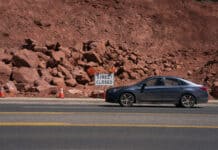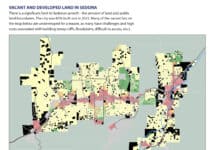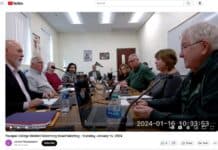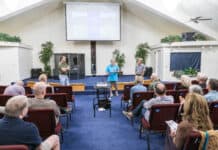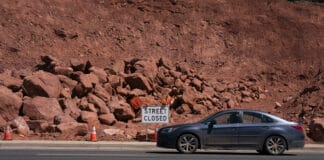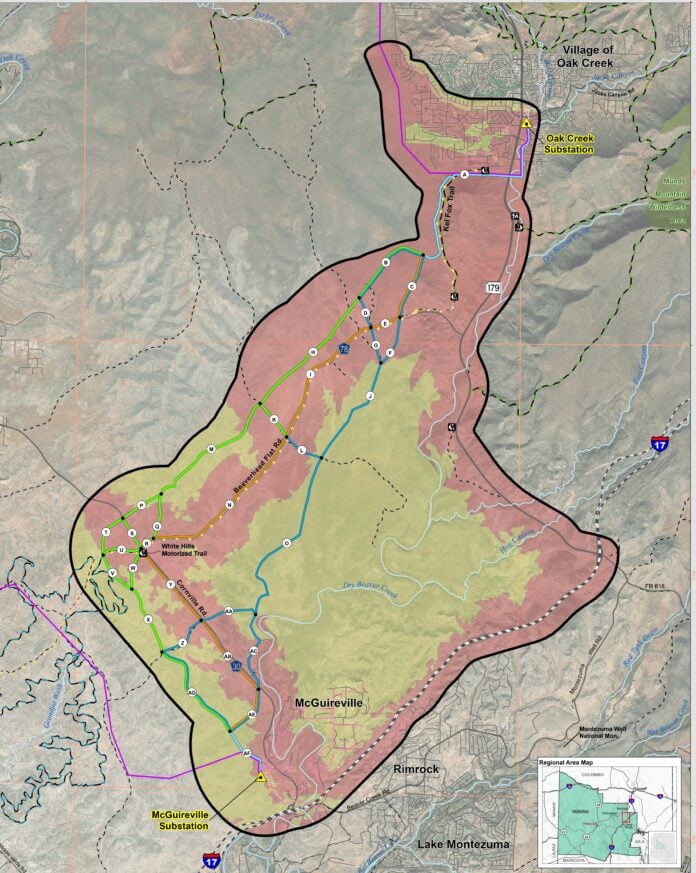
Big Park Regional Coordinating Council nonprofit opposes new line and is exploring legal options
The Coconino National Forest is in the process of finalizing its environmental assessment for a proposed new Arizona Public Service powerline between the Village of Oak Creek and McGuireville substations. A draft record of decision is scheduled for release on Friday, Jan. 5.
The BPRCC’s website states that the council’s major concerns are effects on the viewshed, particularly “along the federally designated Red Rock Scenic Byway [State Route 179] through the VOC; and hiking and equestrian activities along Kel Fox Trail,” the potential for above-ground power lines to become an ignition source for wildfires and potentially reduced property values.
Cost of Burial
The BPRCC has called for the new lines to be installed underground.
According to the APS project’s preliminary assessment, installing the powerlines underground would raise the cost from $1.3 million to $7.45 million per mile and from $17.8 million to $96.1 million overall.
“Another utility in California, Pacific Gas & Electric, has experienced actual ‘undergrounding’ costs of $4 million a mile, with more recent costs of $3.3 million and expected to be lower in the future,” the BPRCC stated on its website. “In other words, the cost of burying at least key sections of the line may be inflated by APS and less than half the estimated cost provided to the Forest Service.”
APS’ position is that its figure is based on several estimates from excavation contractors, with multiple factors contributing to the higher estimated cost of undergrounding the proposed line.
“Excavation for this particular project would require digging in extremely rugged terrain and rocky conditions, and would require extensive equipment, labor and time,” APS spokeswoman Yessica Del Rincón said. “The proposed route of this project is also challenging and runs through heavily-vegetated areas with proximity close to archaeological sites, conflict with other existing underground utility lines like water and gas, as well as high elevation changes. This would require greater resources and materials to ensure the construction and installation of this line is safe for members of the public and the community.”
Del Rincón added that certain sections of the route will be buried, that the overhead sections support “customer affordability” and that APS’ year-round wildfire and vegetation management programs can more effectively maintain the overhead sections of the proposed line compared to burial.
Analysis conducted by Pacific Gas & Electric estimated that burying power lines reduce their risk of igniting a wildfire by around 99%.
“We want to be as risk-averse as we possibly can. We want to keep our customers and community safe,” APS director of statewide delivery Frank Sanderson said when asked about residents’ concerns regarding fire risk. “That’s why we really put a lot of emphasis on our engineering standards, building them to be as robust as we possibly can. In the event that a wildfire does break out, they’re often used as fire breaks for our fire response teams to put out the fire in a more efficient manner.”
Electrical Demand
Improving electrical reliability in the VOC is APS’ primary objective for the extension.
“In this particular location we have two substations that are radially fed. That means they’ve tapped off the line and there’s only one way in and one way out,” Sanderson said. “That’s the Oak Creek substation and the McGuireville substation. Any time there is a weather event or any damage happens to our lines there, that means that those customers are out of power until that’s fixed, there’s not another feed that we can switch around to get those customers back on.”
“Customers served by the Oak Creek Substation experience, on average, one sustained power outage of four hours, seven momentary power outages and 150 to 160 hours of rotating power outages during the summer peak per year,” the draft environmental assessment stated.
The BPRCC stated its members conducted a survey of the publicly-traded company’s customers in the VOC and found that residents are content with the reliability of their service.
The BPRCC stated none of its 110 survey participants had a record of rotating power outages and respondents averaged two power outage events every three years, with an average loss of 38 minutes of power per incident. The results of the survey are not posted on the BPRCC website and could not be independently verified.
Sanderson said that he has to take a larger view of outages across the network and that VOC residents may not experience an outage that affects others on the service line.
“It all depends on where the problem is that we’re trying to fix and where it’s being fed from,” Sanderson said.
The proposed 69 kV electric power line would also increase APS’ electrical capacity for existing customers in the VOC.
“We’re looking into the future to say, ‘This is what we think our customers are going to be using … and this is what we’re going to need,’ rather than waiting till we’re having a problem,” Sanderson said. “There’s the loading piece of reliability, and there’s the outage piece of the reliability, and [the proposal] serves both of those purposes.”
Del Rincón said that the estimated load growth for the Verde Valley is about 0.5% annually or 5% over the next decade. Del Rincón was unable to provide APS’ estimate of the VOC’s future power needs.
“Ever since COVID, or maybe even a bit before, our customers have changed their habits,” Sanderson said. “Whether that’s working from home [or] having more electrified homes … The way our customers consume the electric product has changed. So during very high load scenarios, if we were to lose the feed … like in the middle of the summer, [we] could in the future become compromised as far as being able to deliver that much energy. What this does is it gives us multiple paths to be able to feed those customers so that we can feed them reliably.”
Sanderson said that APS is looking at burying “certain sections” of the line but that the company won’t know which ones until the design is finalized.



